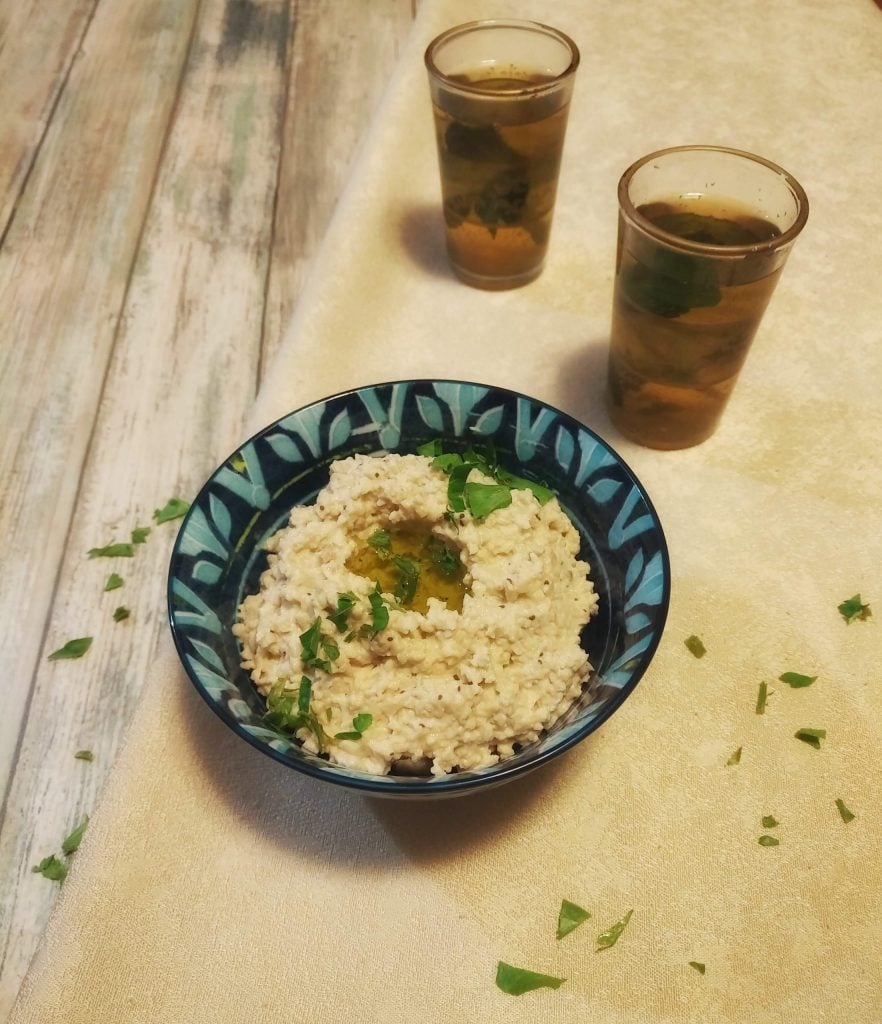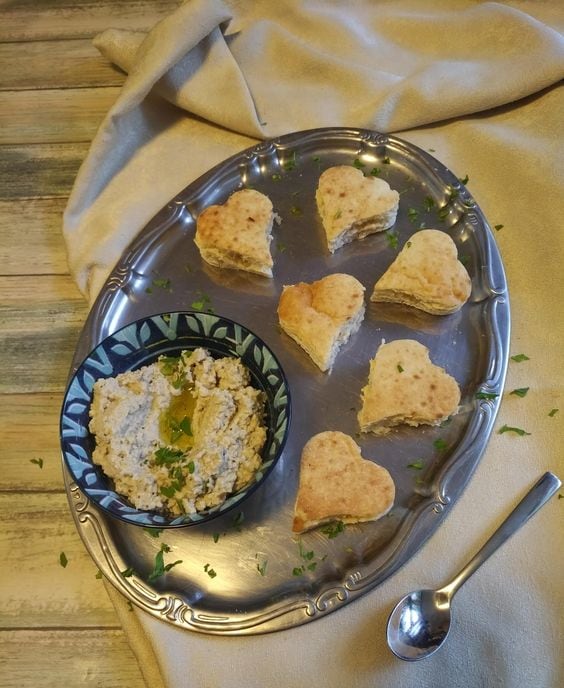I’ve only seen Petra in Jordan.
We were in Taba, a seaside destination in Egypt, in April 2010, chosen specifically to visit the “rose city,” or the archaeological site of Petra.
An exceptional experience. A magical place, out of time, and also the set of numerous films.
During the guided tour, which lasted the whole day (you need a passport to enter from Egypt to Jordan), we dined inside the site, but I don’t remember anything particularly noteworthy.
Jordan is not really a seaside destination, although it is bordered by the Red Sea like Egypt, but it is a cultural destination where it would be worth taking a guided tour, so if I returned, I would dedicate a week to exploring its fascinating history and trying its gastronomic specialties. Among these, my desire, as an eggplant lover, would be to taste moutabel.
Not to be confused with baba ganoush (or muttabal), it differs by the presence of yogurt and tahini, and a smoky aftertaste from cooking the eggplants directly on the flame or coals.
There is also a colorful version based on beetroot called Moutabel shawandar.

- Difficulty: Very easy
- Cost: Very cheap
- Rest time: 15 Minutes
- Portions: 4 people
- Cooking methods: Grill
- Cuisine: Arab
Ingredients
- 2 eggplant (large)
- 2 cloves garlic
- 1/2 cup tahini*
- 1/4 cup plain yogurt
- 2 lemons (juice)
- 1/4 cup olive oil
- to taste salt
- to taste pomegranate (optional, for garnish)
- to taste parsley or mint (optional, for garnish)
Preparation
Roast the eggplants, after scoring them with a knife, but do not peel them, directly on the cooking surface (or in the oven at 350°F) for about half an hour, turning them frequently.
Let the eggplants rest for 10-15 minutes, then rinse under cold water and peel them slowly with your hands.
Remove the stem and scoop out the pulp into a container.
Add the lemon juice, crushed garlic cloves, salt, tahini, and yogurt.
Mash the mixture using a spoon or a mortar and pestle and mix well.
Spread on a plate and garnish with a drizzle of olive oil, a pinch of chopped dried mint, and a sprinkle of za’atar or pomegranate.
Serve warm or cold with pita bread or taboun.


Photos from the excursion in Jordan, in Petra, April 2010.
Affiliate link #adv
* Tahini, sesame cream, is also an essential ingredient for hummus, and you can also buy it online, HERE.
What are the differences between moutabel and Baba ganoush?
Main differences:
Moutabel: is creamier, made with roasted eggplants + tahini + garlic + lemon + often yogurt. It is a true cream.
Baba ganoush (in its most authentic Levantine form): is less homogeneous, can contain roasted eggplants + oil + garlic + lemon, but usually does not have tahini or yogurt and sometimes includes chopped tomato, onion, parsley, or pomegranate.
In some regions (especially in Syria and Palestine), the eggplants are baked or grilled, then chopped by hand and mixed with other ingredients, giving a more rustic result compared to mutabbal.
So:
If you make moutabel, yes: tahini and yogurt, smooth consistency, even blended.
If you make original Levantine baba ganoush, you can cook the eggplants in the oven or on the flame, but without tahini, keeping it coarser.What is the recipe for Levantine Baba ganoush?
Here is the authentic Levantine recipe for Baba Ganoush (بابا غنوج), without tahini, as traditionally prepared in Syria, Lebanon, and Palestine.
Traditional Baba Ganoush (rustic version, without tahini)
Ingredients (for 4 people):
2 large eggplants (about 1.3 lbs)
1 small garlic clove (optional)
1 tablespoon of fresh lemon juice (or to taste)
2 tablespoons of extra virgin olive oil
Salt to taste
2 tablespoons of chopped fresh parsley (optional)
1 tablespoon of finely chopped red onion (optional)
1 tablespoon of chopped tomato (optional)
Pomegranate seeds or a pinch of sumac for garnish (optional)
Procedure:
Cooking the eggplants:
Roast them whole over an open flame (stovetop or grill) until the skin is charred and the inside is very soft (about 10-15 min).
Or in an oven at 425°F for about 40 min. Pierce them first with a fork.
Drain and peel:
Once cooled, remove the skin and let the pulp drain in a colander to remove bitter liquid.
Mash by hand:
Reduce the pulp into pieces with a fork or knife. Do not blend: the texture should be rustic.
Season:
Add salt, lemon, finely minced garlic (if used), olive oil, and mix gently.What is the recipe for Egyptian Baba ganoush?
The traditional Egyptian version of baba ganoush, differs from the Levantine variants and has unique characteristics.
Egyptian Baba Ghanoug (بابا غنوج مصري)
Ingredients (for 4 people):
2 large eggplants
1-2 garlic cloves
1 tablespoon of lemon juice
2 tablespoons of whole yogurt (optional but common in Egypt)
1 tablespoon of tahini (optional, often not included)
1 tablespoon of white or wine vinegar
2 tablespoons of chopped fresh parsley
1 tablespoon of finely chopped red onion
1 ripe chopped tomato (optional)
Salt and pepper to taste
Extra virgin olive oil for serving
Optional: chopped chili or cumin
Procedure:
Cook the eggplants:
Roast them on the flame or in the oven as in the Levantine version.
Drain and chop:
Remove the skin, drain excess water and coarsely chop the pulp.
Mix:
Add garlic, lemon, vinegar, yogurt (and tahini if used), parsley, onion, tomato. Adjust salt and pepper.
Serve:
Pour into a bowl, drizzle with olive oil, and if desired, add a pinch of cumin or chili.
Egyptian characteristics:
More fresh and tangy due to vinegar.
Flavorful due to raw garlic, parsley, and onion.
More fluid consistency compared to the rustic Levantine style.
Often served as meze with baladi bread or pita.

